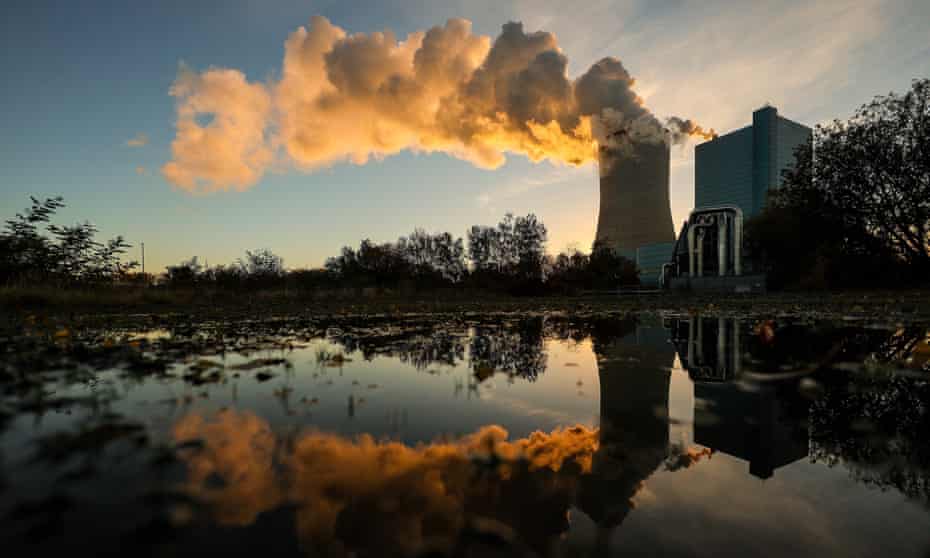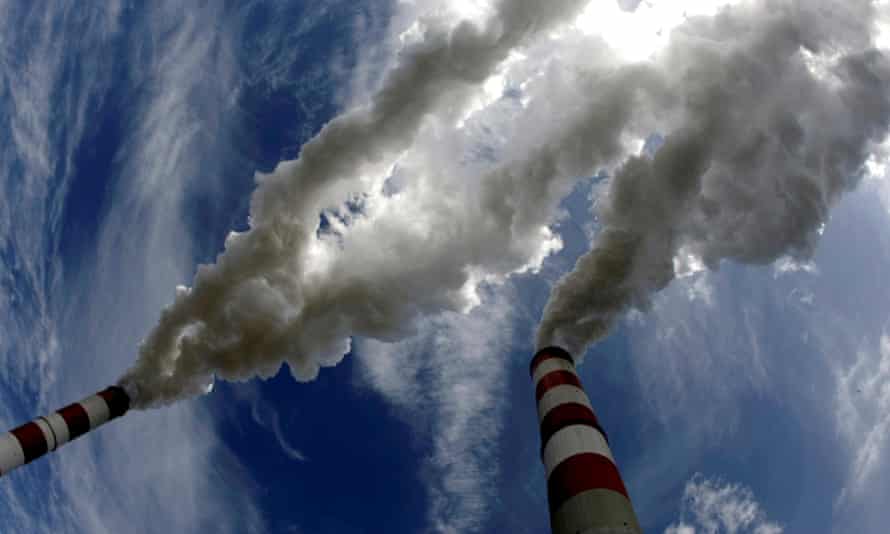Extract from The Guardian
A Cop26 breakthrough means emissions trading schemes can work together worldwide with less fear of being gamed.

This could be about to change, however, after a breakthrough at the Cop26 climate summit in Glasgow this month which set out the principles that could finally force polluters to pay.
Carbon markets typically take one of two forms: mandatory, government-led emissions-trading schemes that force major polluters to match their annual emissions with “allowances” that must be bought and sold within a market, like commodities; or a voluntary scheme in which polluters offset their emissions by paying to support projects – such as tree planting – that can cut carbon at the rate they produce it.
“It creates a framework for international cooperation,” said Hæge Fjellheim, the head of carbon research at financial data provider Refinitiv. “And a solid one that ensures integrity by preventing double counting of emission reductions when credits are transferred across borders.”
Emissions-trading schemes have had a chequered past. They are designed with a declining cap on the number of allowances available to buy, to ensure a rising carbon price and give a clear market signal that emitting CO2 doesn’t pay. Through the market, those companies that cut emissions can sell the permits they no longer need for a profit, while those that continue to pollute must pay a steadily rising price.
In the past, major polluters including big oil companies have publicly favoured carbon markets – which are notoriously difficult to set up – while privately lobbying policymakers to stall progress on such schemes. But in recent months they have begun to show signs of a real impact on polluters.
Last week the EU’s emissions trading scheme, one of the first in the world, reached a record carbon price of almost €67 a tonne in the first day of trading following the Glasgow summit, as factories and power station owners scrambled to buy enough permits to match rising post-pandemic emissions. The UK’s scheme, set up in the wake of Brexit, is expected to follow suit.

Similar programmes worth a total of $272bn are up and running or in development across the globe – including in Canada, China, Japan, New Zealand, South Korea, Switzerland and the US.
The Glasgow agreement lays the foundation for these markets to link up without the risk of double counting emissions savings – potentially enlarging the money-making opportunity for those able to reduce carbon emissions at speed and scale to a global level. For example, if China’s coal plant owners cut their emissions they could one day – in theory – sell their allowances to British steelmakers at a profit.
But the scale and speed of climate action required this decade means many would still prefer for governments to direct efforts towards domestic carbon taxes, combined with carbon border taxes, to create direct financial consequences for the world’s most polluting countries.
Molly Scott Cato, the Green party’s economics spokesperson, said: “I’m sceptical of carbon markets because we know that there is an army of lobbyists from the fossil fuel industry looking to game the system and pushing the government to distort these markets in their favour.”
Scott Cato was “a strong supporter of putting a price on carbon” but would prefer it in the form of a tax. “It’s a Green party policy which we have found would help the UK government raise around £80bn of revenue a year … and it would create a clear market signal,” she said.
In the past decade, the UK’s carbon price floor – a carbon tax used on top of the price of carbon allowances – effectively wiped out coal-fired power by making it too expensive compared with other electricity generation options. The catch? It has also disadvantaged UK heavy industry and nudged buyers of steel and cement towards higher imports of Chinese-made products, which do not face the same climate regulation. This “carbon leakage”, as it is known, is a large part of the reason why global emissions have continued to rise even as the UK and EU have reduced CO2 output.
The answer may be a carbon border tax, which would require importers to pay a price for the carbon impact of energy-intensive goods, regardless of where they were produced. This could cut emissions and level the playing field for local manufacturers.
But the idea is not without its detractors. The European Council on Foreign Relations thinktank warned this month that the EU’s efforts to set up a carbon border tax could inadvertently “sabotage efforts” to meet global climate targets. It might incentivise countries such as China and Russia to invest in cleaner manufacturing, but producers in Africa, for example, which cannot afford to invest in green innovation, would simply sell their products to countries with lower environmental standards.
This tangle of unintended consequences may be part of the reason why emissions-trading schemes have held an enduring appeal for governments, and underlines the importance of the Glasgow breakthrough.
“A global carbon market or a uniform global price or tax will not be on the cards any time soon,” Fjellheim said. “But the clear trend is that the cost of polluting is rising in carbon markets worldwide.”
Carbon and countries
The recent wave of climate pledges from companies including oil majors and airlines has already led to a boom in green schemes that promise to reduce emissions. However, the new rules agreed at Cop26 this month promise to turbocharge the sector by putting in place a market-based mechanism that would allow whole countries to use the schemes to meet national goals.
For example, a country struggling to hit its UN target could invest in a tree-planting scheme in Brazil or a renewable energy project in Nigeria to help meet its own goals.
Under the rules, a central mechanism lets countries trade credits generated by projects that claim to reduce emissions, while removing the risk of double counting or “phantom credits”.
Proponents point out that this could help direct trillions of dollars into developing countries that could otherwise not afford to invest in reforestation or low-carbon energy. But there are detractors too, including the Green party’s Molly Scott Cato. She said there remained “a question of accountability” regarding work on the projects in developing economies over “who is going to be on the ground” to monitor them and “who will really benefit financially”.
No comments:
Post a Comment